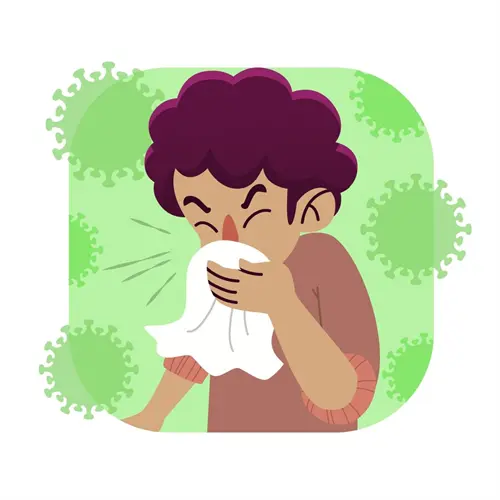Preventive Healthcare
Dysentery: Symptoms, Causes, Types & Treatment and Prevention Tips
1619 Views
0

What Is Dysentery?
Dysentery is an inflammatory condition of the intestine, primarily caused by bacterial, viral, or parasitic infections. It results in severe diarrhoea, abdominal pain, and sometimes blood in the stool, which can be very distressing. There are two main types of dysentery: bacterial dysentery and amoebic dysentery, each with different causes and treatments.
While this may sound concerning, learning about the condition can help alleviate your concerns. Knowing the symptoms and treatments is important for your overall health and well-being. By staying informed, you can take preventive steps and seek medical help when needed. Let’s take a closer look at this condition and discuss how to manage it effectively and safely together!
Who Does dysentery affect?
Anyone can get dysentery, but it’s more common in tropical areas with poor water sanitation. Practice good hygiene, like washing your hands often, helps lower your risk. Be careful about the water and food you consume, especially when traveling. Stick to bottled water and cooked foods in high-risk areas. Learning about prevention is essential for protecting yourself and your family.
How Common Is Dysentery?
Dysentery affects around 1.7 billion people each year. Staying informed and taking preventive measures is crucial for protecting your health.
What are the Symptoms of Dysentery?
Symptoms of dysentery can differ depending on the type. Here are the signs to watch for:
Amoebic Dysentery:
Most people with amoebic dysentery might not exhibit any symptoms. However, in some cases, mild symptoms can include:
- Diarrhoea
- High fever
- Nausea and vomiting
- Weight loss
- Upset stomach
In rare cases, the parasite can spread to other parts of the body, potentially causing an abscess.
Bacillary Dysentery:
Symptoms of bacillary dysentery can include:
- Diarrhoea containing blood or mucus
- High fever
- Nausea and vomiting
- Painful stomach cramps (abdominal pain)
While these symptoms can be quite concerning, effective treatment can help relieve them and support recovery.
Does Dysentery Cause Death?
If untreated, dysentery can lead to severe complications, including large intestine dilation, acute kidney disease, and even death, especially in young children and the elderly.
What are the Causes of Dysentery?
The main causes of dysentery are poor sanitation and inadequate hygiene practices.
Bacterial dysentery usually arises from consuming food or water contaminated with harmful bacteria such as Shigella, Campylobacter, Salmonella, or E. coli. On the other hand, amoebic dysentery is typically caused by ingesting food or water contaminated with a single-celled parasite called Entamoeba histolytica.
Remember our discussion about handwashing? Poor hand hygiene by infected individuals can significantly contribute to the spread of dysentery. Other common transmission methods include swimming in contaminated water, which can be particularly risky, and direct contact with an infected person. Maintaining good hygiene and sanitation is essential to preventing this serious illness and protecting public health.
Is Dysentery Contagious?
Yes, dysentery is very contagious. Amoebic dysentery usually spreads from contaminated food or water. It can also spread through oral-anal sexual contact.
How is Dysentery Diagnosed?
If you suspect dysentery, consult your healthcare provider for evaluation. They will check your symptoms, review your recent travel history, and may perform tests like stool analysis to identify the infection.
What Tests will be Done to Diagnose Dysentery?
Healthcare professionals may recommend several tests to accurately diagnose dysentery:
- Blood Tests: These check your blood count, electrolyte levels, and kidney function, helping assess the severity of diarrhoea and any complications.
- Stool Test: This analysis identifies specific bacteria, viruses, or parasites causing the diarrhoea, which is essential for effective treatment.
- Sigmoidoscopy or Colonoscopy: These procedures allow doctors to visually inspect your colon and collect tissue samples if necessary.
- Upper Endoscopy: This enables examination of your stomach and upper small intestine for abnormalities.
- Imaging Tests: In some cases, X-rays or ultrasounds may assess the digestive system for additional issues.
These tests are crucial for diagnosing dysentery, determining the most effective treatment plan for recovery, and improving overall health.
What is the Fastest Way to Cure Dysentery?
For amoebiasis, healthcare professionals typically prescribe antibiotic and antiprotozoal medication and OTC medicines for nausea.
Bacillary dysentery often improves on its own within a week, but antibiotics and intravenous fluids may be needed. Home remedies include staying hydrated with water, broths, and juices, while avoiding caffeine and alcohol. Gradually add semisolid, low-fiber foods like crackers, toast, rice, and eggs as stools normalise.
How do I Take Care of Myself?
Dealing with dysentery can be challenging, but taking proactive steps can help you manage it effectively:
- Stay Hydrated: Drinking plenty of fluids is essential to prevent dehydration from diarrhoea.
- Gradual Dietary Changes: As your symptoms improve, shift from a liquid diet to semisolid and low-fiber foods.
- Get Plenty of Rest: Rest is crucial for recovery, so make sure you get enough sleep and take breaks.
- Consult a Healthcare Professional: Always consult a healthcare provider before starting any medication or supplement.
How Soon After Treatment will I Feel Better?
Recovery times differ by dysentery type. Amoebiasis patients usually improve in 14 days, while bacillary dysentery patients recover in one week.
How can I Prevent Dysentery?
To prevent dysentery, maintaining good hygiene is crucial. Regular handwashing is essential, especially when changing diapers for infected babies. Avoiding swallowing water while swimming can also help. Understanding the causes of dysentery aids in developing effective prevention strategies.
When visiting areas where amoebic dysentery is common, be cautious about:
- Ice in drinks
- Open bottled water (boil if sealed bottles aren’t available)
- Food from street vendors
- Peeled fruits or vegetables unless you peel them yourself
- Unpasteurized dairy products like milk and cheese
For safe drinking water, choose bottled water with unbroken seals, carbonated water in sealed containers, or soda in sealed cans. Boiling tap water for at least one minute or using a 1-micron filter with added chlorine or iodine tablets is also effective. Following these precautions can significantly reduce your risk of contracting dysentery, ensuring you stay healthy while traveling and enjoying new experiences.
How Can I Avoid Spreading Dysentery?
If you are diagnosed with dysentery, follow these guidelines to prevent spreading the infection:
- Avoid close contact with others
- Refrain from sexual contact
- Do not prepare meals for anyone else
- Avoid swimming
- Disinfect common surfaces like toilets, sinks and door handles regularly
- Wash your laundry in hot water (at least 60°C)
What can I Expect if I have Dysentery?
Dysentery can be challenging, but it is manageable. Most people recover successfully with proper diagnosis and treatment. However, untreated amoebiasis can cause severe health threats and can even be fatal.
When to see a Doctor?
It's crucial to seek medical attention if you experience severe abdominal pain, a fever of 102 degrees or higher, diarrhoea lasting more than 2 to 3 days, or signs of dehydration such as increased thirst, dry mouth/lips/eyes, low urine output, dark/strong-smelling urine, lightheadedness/dizziness, or fatigue.
What’s the Difference Between Dysentery and Cholera?
Both dysentery and cholera are diseases that affect the digestive system, but they have different causes. Dysentery can be classified into two main forms: amoebiasis, linked to parasites like E. histolytica, and bacillary dysentery, caused by bacteria such as Shigella. The bacteria Vibrio cholerae causes cholera.
Conclusion
In conclusion, managing dysentery effectively requires awareness about its causes, symptoms, and treatments. It's crucial to maintain good hygiene practices and seek medical help promptly if you suspect dysentery.
Consider exploring Metropolis Healthcare's website for more accurate pathology testing and health check-up services. Our dedicated team of blood collection technicians can visit your home for sample collection, ensuring a smooth diagnostic process. Prioritise your health today with Metropolis Healthcare's reliable results and personalised care!























 WhatsApp
WhatsApp